The Best Leather for Jackets According to Experts
In 1928, brothers Irving and Jack Schott designed history’s most influential motorcycle jacket: the Perfecto. Becoming the rebel-without-a-cause jacket of choice throughout the 20th century, it helped grow Schott NYC to its current status as America’s premier leather jacketmaker.
Over time, Schott has released countless styles in countless leathers, but not all leathers are created equal.Last year, we picked up goatskin jackets and horsehide jackets and started to wonder, “What are the pros and cons of each?” and “Is there the best leather for a jacket? “
Clearly, there’s no better person to ask than Jason Schott, the great-grandson of Schott NYC’s founder. He helped break down the myriad kinds of leather used in jackets and delved into the pros and cons of everything from weight to warmth to aesthetics and more.
Key Takeaways:
Horsehide is thicker, is harder to break in, and is more expensive. Goatskin’s thinner but just as tough as cowhide if you don’t mind the grainier look.
Thinner leathers (suede, nubuck, lambskin) are more comfortable at first, at a slight sacrifice for durability. How the leather is processed also matters. Ask the brand for tips
How Thick Should Jacket Leather Be?
When selecting a leather for your jacket, consider how you plan on using it. A guy who rides a Harley Davidson Fat Boy in cold weather will have different needs than an Australian YouTuber living in New York City.
Leathers vary in thickness, warmth, and comfort, so getting the right leather starts with choosing a weight, leather processing methods, and picking the appropriate animal hides.
| Leather Jacket Weights | ||
|---|---|---|
| Weight | Thickness | |
| “Heavy” | 1.4 mm + (~4 oz) | |
| Middle | 1.1 – 1.3 mm (~3 oz) | |
| Light | 0.8 – 1.0 mm (~2 oz) | |
Heavyweight Jacket Leather
- Difficult to break in
- Molds to your body while retaining shape
Jason brought out a heavyweight Schott Perfecto made from Horween’s Chromexcel. Horween is one of America’s best-known and most-respected tanneries. This was an example of thick cowhide, but horsehide leather jackets also tend to be heavyweight.
To be classed as “heavyweight” (and Schott does indeed categorize jackets by weight on their site), the leather is about 1.4 millimeters thick (rarely more), a weight labeled 4 to 4.5 “ounces” by leatherworkers. These jackets can stand up on their own when placed upright.
“Not everybody wants a jacket that’s gonna stand up by itself,” Jason concedes. “But for people who want that ‘weight equals quality’ thing, something like this is a good way to go.”
Motorcycle jacket in heavy Horween chromexcel steer hide, 100% wool plaid lining, two front slash pockets, one zippered chest pocket, with adjustable side tabs.
Pros of a Heavyweight Leather Jacket
Thicker leather is often preferred by motorcyclists who want more protection from the wind and potential accidents. It’s more abrasion-resistant, so they will better protect the wearer if they fall off their bike.
For the non-bikers, thicker jackets offer a more protected feeling than thick denim. It’s a little warmer and a little more abrasion-resistant, but the main difference is how it feels on the body.
That said, they retain their shape better relative to thin leather jackets. Thin leather drapes a little more like a t-shirt, and many prefer the structured look of heavyweight stuff.
Thinner jackets (like lambskin) also tend to stretch over time. Some don’t take issue with that, given how much softer those jackets are, but a thick leather jacket will retain its shape while also molding to your body.

Cons of a Heavyweight Leather Jacket
“Well, doesn’t weight equal quality?” you might be asking. Well, not objectively — different people value different things!
Thick leather might sound great to you, but others might define quality as something that’s both durable and comfortable, and heavyweight jackets are well known for their stiffness.
“It’s gonna take some time to break in, it’s a lot like raw denim,” says Jason. “You’re gonna feel it in your elbows, it’s not always the most comfortable. But once it breaks in and molds to your body, you don’t ever want to part with it. It’s something that should last for decades and once it’s broken in, it’ll exactly bend where you bend. It’s just whether you want to put the time in to break in a jacket like that.”
That thickness is probably a plus, objectively, only if you’re a motorbike rider and want something that’s more abrasion-resistant.
Putting aside the fact that heavier leather is unlikely to make a huge difference if you’ve flown into the gravel on the highway, almost everyone who buys a leather jacket is wearing it casually. If that’s you (be honest), the weight isn’t going to make a massive difference in how long the jacket will last, at least not compared to midweight leather.
Thicker leather also tends to be more expensive, especially if you’re getting something made with horsehide, which is the heavyweight leather of choice for guys who are really into this kind of menswear.

Midweight Jacket Leather
- Works well for a variety of activities and climates
Is midweight the best weight? Well, yeah, probably. That’s why it’s the middle one.
“These are around 1.1 to 1.3 mm thick,” explains Jason.
The weight makes it less stiff, but depending on the jacket, it might also be drummed (hours spent in a tumbling machine) and vacuum dried, which softens the leather.This is a reminder that it’s not just the thickness that matters.
The kind of animal and the way the hide is processed all factor into comfort and durability.
A brand with over 100 years of experience, Schott NYC make America's most beloved leather jackets — and this Cafe Racer will hold up for decades.
Pros
- Balances comfort and durability
A midweight leather jacket balances comfort, durability, and ease of break-in, making it the more popular weight.It’s pretty simple: heavyweight is tougher but less comfy, lightweight is more comfy but less tough, and midweight is a balance of the two.
In the video for this article, I’m wearing my Schott jacket, the 530 cafe racer. It’s a perfect example of a Goldilocks jacket: thick enough to feel substantial but comfortable from the get-go.
Further Reading

Review: Schott’s Café Racer Is the Best Leather Jacket
One of my favorite leather jackets is Schott’s Café Racer. It fits and looks amazing. Read More →
Cons
- Not the softest
- Not the toughest
- Not the cheapest
Midweight jackets are a clear winner for most folks because they avoid the extremes, but if you have a quality in mind that you want to really lean into — thickness, comfort, price — then you’ll be unsatisfied. It’s right down the middle.

Lightweight Jacket Leather
- Easy break in
- May stretch out over time
Lastly, at the end of the spectrum are lightweight jackets. These leather jackets are usually 0.8 to 1mm thick.
Jason refers to these as “indoor jackets,” which can be worn inside without the wearer sweating.
A good example of a lightweight jacket would be Schott’s P571 Mission cowhide jacket or their Lightweight Fitted Cowhide Moto Jacket. They’re half the thickness of the heavyweight jackets, so they’ll be easy to wear out-of-the-box.
Classic unlined cafe racer in a lightweight, waxy, smooth finish cowhide. Expect no break in.
Pros
You should consider a lightweight leather jacket for its immediate comfort and flexibility.”(The Mission) is like my indoor leather jacket,” says Jason. “It’s unlined, 0.8 to 1.0 millimeter in thickness.”
You could consider it a much more casual version of a sports coat: a thin shell that works well on a night out.
It’s the best kind of jacket for warm weather. If you think it won’t be warm enough when it’s cold, you can always plan to throw a sweater or hoodie underneath it. As far as something that works in various climates, you could call lightweight jackets the most versatile.
Cons
“The lighter weight leathers are going to stretch out more,” says Jason. “The thing about leather is, if it stretches it doesn’t always come back into place. They’re also more prone to tearing over time.”

What Animal Makes the Best Jacket Leather?
Goat? Cow? Calf? Horse? Sheep? Lamb?
Cow is the go-to, but a lot of that has to do with the fact that we just eat a whole lot of beef. We used to eat more horses in the first half of the 20th century, so horsehide jackets were much more prevalent then.
So don’t assume that cow is the ‘best’ because it’s everywhere. Some leathers, like goat, are extremely strong for their weight, which is why it was so common on pilots’ jackets during the World Wars.
We’re getting ahead of ourselves. Let’s go through the list one by one.
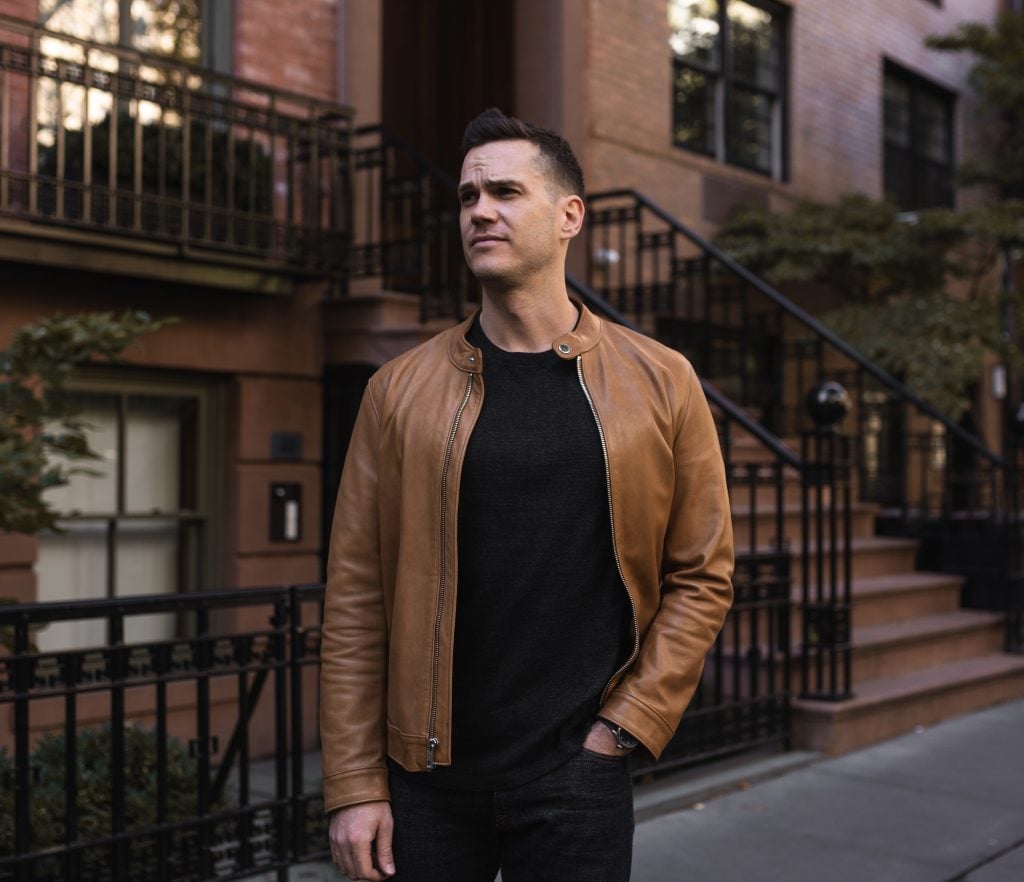
The Pros and Cons of Lambskin Leather Jackets
- Inexpensive
- Very soft
- Smooth in appearance
- Not super durable
Supple soft with a little extra toughness from the veg tanning, this jacket will feel broken in right from the box.
There’s a good chance you’re coming across more lambskin jackets than cowhide: it’s cheaper and softer and more popular and accessible.
Because the animal hasn’t grown as much, the fibers are closer together, and the hide has a smoother, more consistent look. Add to that the fact that it’s super soft and cheap (fewer resources have been used to raise the animal), and you’ve got a popular leather.
“It has a really nice, clean look to it,” says Jason. “It’s really comfortable and easy to wear, that’s the biggest advantage of lambskin.”
You were expecting this part: because it’s softer, it’s less durable. But for urban wear, it’s hard to say no to it: the luxurious, buttery smooth texture provides immediate comfort with little break-in period.
“Lambskin is nice and soft and is very good, but you have to handle it with kid gloves,” says Jason.

The Pros and Cons of Sheepskin Leather Jackets
- Leatherized sheepskin, with the wool, is one of the warmest jackets on earth
- Sheepskin without the wool is not a great leather, but it’s cheap
The iconic sheepskin bomber jacket, bristling with wool, is an inside-out sheep. It’s been tanned without removing the wool.
“The reason they did this goes back to when they were flying in bomber airplanes during World War 2 when the bombers out on the wings didn’t have any heat on that part of the plane and they needed a really heavy jacket that was going to keep them warm,” says Jason. “The fur kept them warm, but it also was moisture wicking, so they wouldn’t get too sweaty in there.”
Leaving the fur attached to the hides is a trademark of the classic B-3 Sheepskin Leather bomber jacket.
Made to keep pilots warm in open cockpits, the B-3 is the classic WWII shearling leather "Bomber" jacket — there's practically nothing warmer. (Or cooler.)
What about when you see sheepskin leather jackets without the wool?
“Sheep is mid-level,” says Jason. “It’s not as strong as cow, it’s not as nice as lamb, it’s kind of a bit in no man’s land.”
But that’s why it’s cheap. If a sheepskin jacket costs as much as lamb or cow, don’t get it.

The Pros and Cons of Goatskin Leather Jackets
- Stronger than cowhide, pound for pound
- Less consistent appearance, some dislike the aesthetics
- Cheaper than cowhide
'Heavy,' and 'goat,' and 'suede' all make this excellent motorcycle jacket something truly special, plus there's herringbone wool lining for extra warmth.
You might be surprised to learn goatskin is stronger than cowhide. It’s just less pretty looking, with an irregular grain pattern that resembles ridges, so it’s not as popular. Goats can live pretty rough lives, so their skin might also have more blemishes and scars than something like lambskin.
“There’s a very characteristic grain to it, it’s very different to the lamb,” says Jason. “Goatskin is definitely much stronger than lambskin, you just have to be comfortable with that grain because lambskin is very smooth, usually.”
A lot of World War military jackets were made in goat skin, and it’s common on reproductions of those garments. The armed forces didn’t care about a grainy appearance, and goatskin came in handy during the leather shortages of the world wars.
“It’s also stiffer. It’s very durable. Goatskin is definitely much stronger than lamb skin,” says Jason. “I would say, pound for pound, goatskin is stronger than cowhide. The internal fibers are actually stronger. It really just comes down to a comfort level with the grain.”

The Pros and Cons of Horsehide Leather Jackets
- Very thick and tough
- Harder to break in
- Rare and expensive
- Tends to have a higher sheen
Handmade in New Jersey, this classic Perfecto® jacket in black horsehide leather wears hard and looks great.
Horsehide leather jackets have a unique place in the world of leather jacket enthusiasts, especially when it comes to high-end Japanese jackets because it blends rarity, durability, and distinct aesthetics.
In the 1920s and 1930s, when Jason’s great-grandfather was building Schott, people were eating more horses, and products made with their leather were more common. Today, not so much.
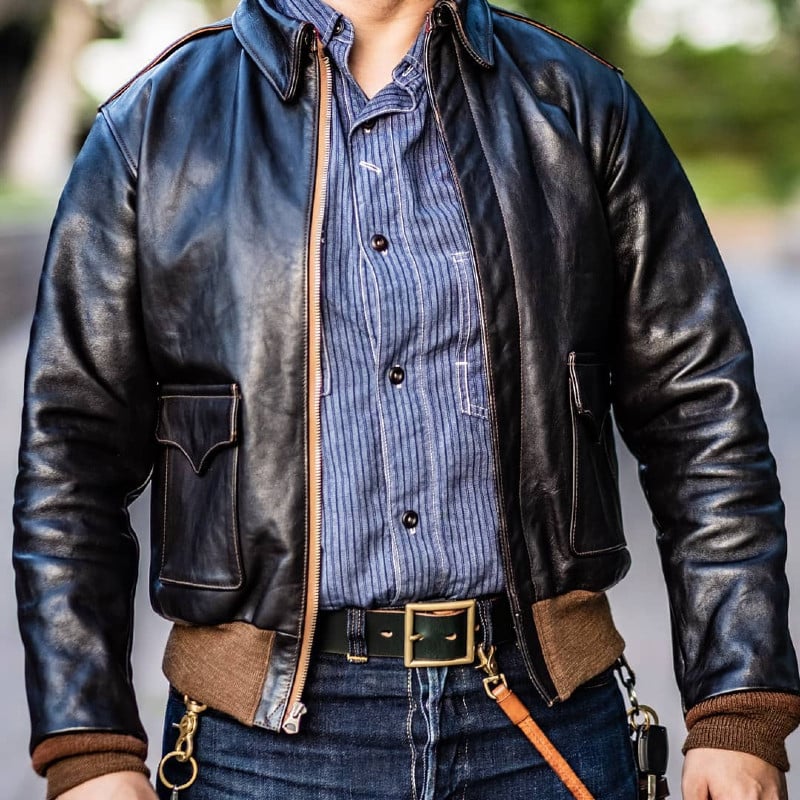
“I think the number one reason why people want horsehide is to be a little bit different,” says Jason. “It is very durable. It is very strong. And it will last for a long time. I think you can get the same thing out of cowhide, it’s just (horsehide) is a bit special because it’s much more rare.”
Some will say horsehide has a higher sheen, but this has a lot to do with how it’s finished. Sometimes it’s chrome; sometimes it’s matte.
As a rule, though, horsehide is thicker and stiffer compared to other leathers, especially at the outset. As we’ve discussed, that means it’s less comfortable at first, but it does eventually soften and feel like a second skin. That element of “earning” your comfort appeals to a lot of enthusiasts.
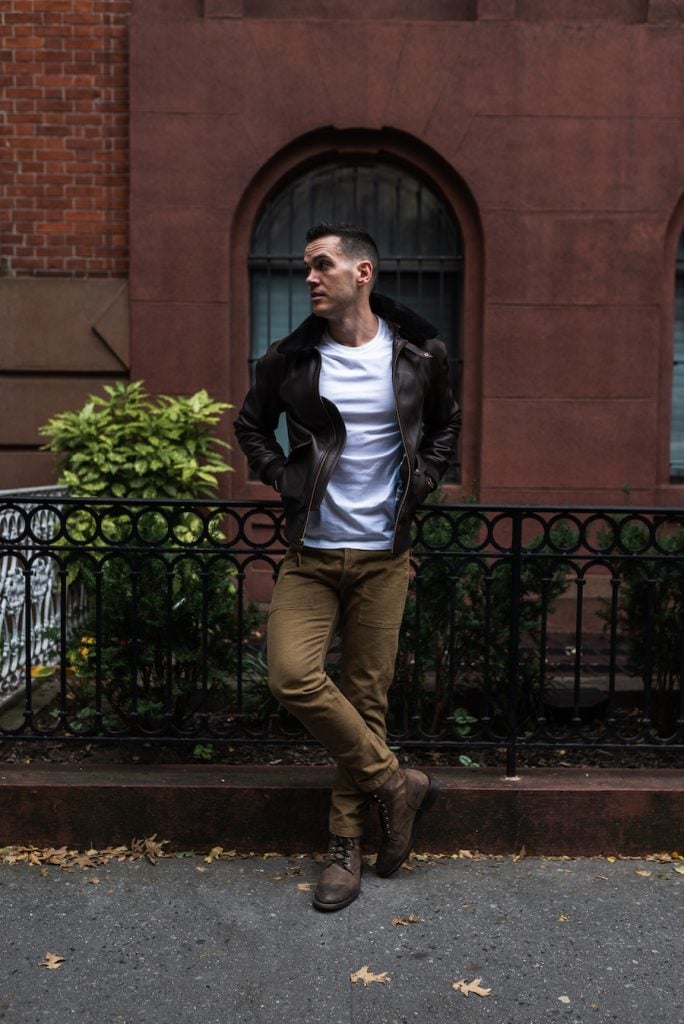
The Pros and Cons of Calfskin Leather Jackets
- Lightweight
- More abrasion resistant than lamb
- Less soft and warm than lamb
“We don’t use it,” says Jason. “It’s a very lightweight hide which is not something we use often. If we do lightweight leathers, it’s usually a lambskin.”
There’s not a gigantic difference between lambskin and calfskin, but since it’s not as tough as the harder-wearing jackets, brands tend to use the softer, cheaper, and (slightly) warmer lambskin if they’re going in that direction.
The Pros and Cons of Cowhide Leather Jackets
- Strong, not too stiff, and very durable
- Pricier than lamb and goat, cheaper than horse
Features hidden snap down collar, zip front closure over inside fly piece, three double welt front pockets with ball n' chain pulls, and cotton flannel lining.
Cowhide is the classic leather most people associate with jackets. We eat more beef than sheep and horses, so cowhide is the most widely available leather. Fortunately, it also holds up great.
“Cowhide is a very strong leather, and it’s the basis for most really well-known leather jackets,” says Jason. “Technically, it’s going to be more durable, but it’ll be a little less comfortable from the get-go. This means that some cowhide jackets might require a break-in period before they become fully comfortable.”
This durability makes cowhide jackets a practical choice for both everyday wear and more demanding activities, such as motorbike riding.
Here, more than ever, you need to take into account the weight. We can’t say “cow is stronger or weaker” without mentioning its thickness — that’s what you’re basing your decision on. Find out how many ounces the leather is (again, Schott arranges their jackets by weight), and then you’ll know what the softness-to-toughness ratio is like.
It’s also worth asking how it’s processed: for instance, air-dried leather is stretchier than vacuum-dried leather, which is stiffer.

Ask How Your Jacket Leather Is Processed
It’s not just the thickness or the animal that affects your choice of leather; how it’s processed affects its comfort and appearance.
“Different drying methods, like vacuum drying for naked cowhide or toggle drying for pebbled cowhide, impact the leather’s softness and finish,” says Jason.
A ton of water is used to clean flesh from hides, dilute dyes, deliver extracts and components, and more.
Finished leather doesn’t like water, so it’s necessary to remove moisture from the leather to keep it from rotting. Controlling the evaporation process is key to how the leather will turn out and be used.
Choosing between a rugged, raw feel and a softer, more pliable texture often boils down to these processes.
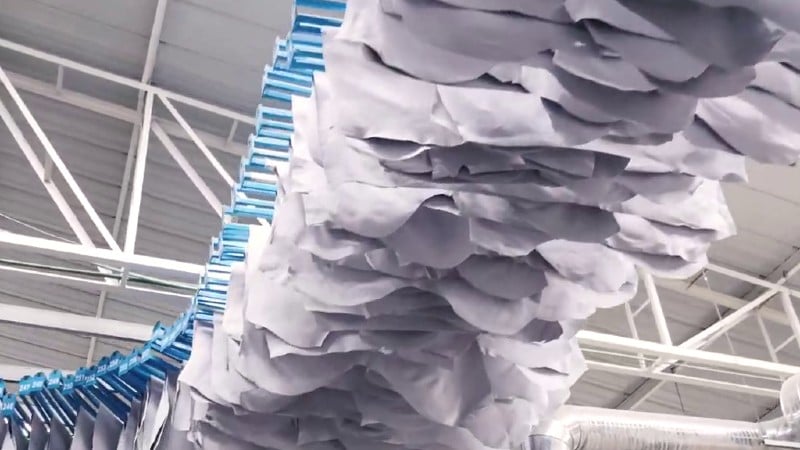
Air Drying
- Slow and old-fashioned, lots of shrinking
- The hide is stretchy, soft, and smooth
Air-dried leather is hung on hooks so moisture can evaporate naturally, like hang drying your laundry versus using an electric dryer. It’s a slow process that shrinks the hide but produces a full or round hand. It’s also a bit stretchy and pliable.
Vacuum Drying
- Longer break in and less pliable
- Higher tensile strength
Vacuum drying is the most modern and complicated of the four methods. The leather is put into large machines, and the moisture is sucked out. It’s based on the scientific principle that water evaporates at low pressure and temperature
The orientation is important because the goal is to let natural oils from the hide pass through to the grain side as water evaporates. Compared to toggle drying, Jason says, “vacuum drying produces leather that is smoother and retains its tensile strength.”
Wrapping Up
Choosing the right leather jacket involves balancing factors like the type of animal, thickness, and the leather’s processing method. While the type of animal is very important, how it is processed can sometimes be more important than the animal itself.
Embrace the effort it takes to find the perfect leather for your jacket. It’s not just a purchase; it’s an investment in a piece of fashion that tells a story. If you have any questions, the team at Schott NYC is super helpful if you’re looking to find the best leather for your jacket.
What leather is most durable for jackets?
Horsehide is very thick and durable, but cowhide can be just as thick. Look for leather that's 1.4mm thick, or described as 4 or more ounces.
Which animal leather is best for a jacket?
Cowhide and horsehide are great options if they're heavyweight, or measured as 4 or more ounces in weight. Goatskin is just as tough and it's lighter, if that's an option.
Is Bison leather good for jackets?
Yes, you just need to be okay with the pebbled appearance. Bison leather combines the toughness and endurance of cowhide with the softness and pliability of lambskin.
What makes a high quality leather jacket?
The leather finishing process, the type of animal hide or skin, and the thickness of the leather all affect the quality. Lambskin is softer, but cowhide or horsehide are more durable options.
Which leather is the best for jackets, top-grain, full-grain, or genuine leather?
Full grain leather jackets will probably be thicker than top grain, but ask the manufacturer about the thickness. If it's over 1mm, you've got a tough jacket. Avoid genuine leather, as the term is often used for low quality stuff.



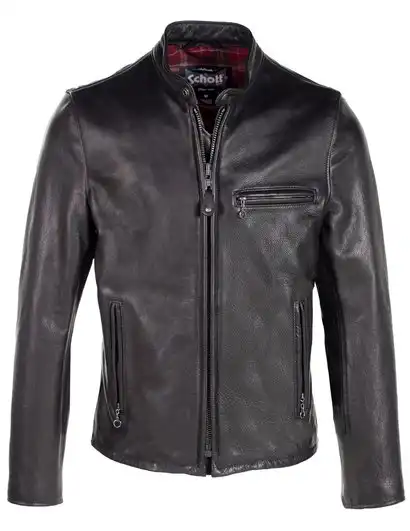












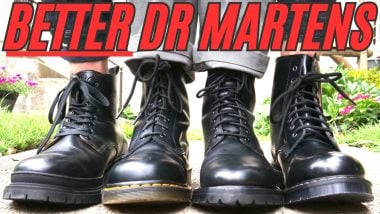

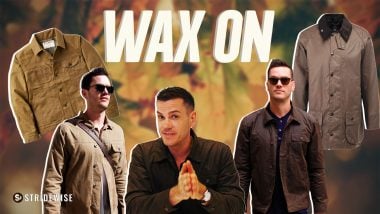
Join the Discussion